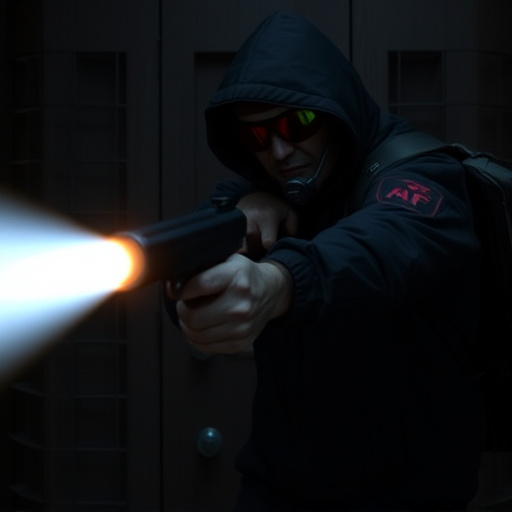Non-lethal self-protection devices, especially stun guns, offer a powerful yet safe response to threats by delivering shocks through clothing. Effectiveness depends on factors like voltage output, pulse width, and prong design, with higher voltages providing stronger shocks while shorter pulses enhance fabric penetration. Stun guns are designed for situations where direct contact is impossible, but users must consider these variables for optimal safety.
In today’s world, personal safety is paramount. Non-lethal self-protection devices offer a viable alternative to conventional firearms, providing individuals with the means to defend themselves without causing permanent harm. This article delves into the essentials of non-lethal protection, focusing on stun guns as a popular choice. We explore their effectiveness in penetrating clothing and highlight key features to consider, ensuring you’re equipped with knowledge to make an informed decision for your safety.
- Understanding Non-Lethal Self-Protection Devices: The Basics
- Exploring Stun Guns: Effectiveness Through Clothing and Key Features to Consider
Understanding Non-Lethal Self-Protection Devices: The Basics
Non-lethal self-protection devices, also known as less-lethal weapons or non-deadly force tools, are designed to incapacitate or deter potential threats without causing permanent harm or death. These devices have become increasingly popular for personal and professional use due to their ability to provide a powerful response to dangerous situations while minimizing the risk of fatal injuries. One of the most common types is the stun gun, which uses an electric current to disrupt muscle control, causing the target to experience temporary paralysis.
In terms of effectiveness, stun guns can be powerful tools, especially when used properly. Some models are capable of delivering a shock through clothing, making them useful in various scenarios where direct contact may not be feasible or desirable. The ability for stun guns to stop an attacker without leaving permanent marks makes them appealing for individuals seeking personal protection. However, it’s crucial to understand that their success depends on factors like the device’s power, proper usage, and the target’s physical attributes.
Exploring Stun Guns: Effectiveness Through Clothing and Key Features to Consider
Stun guns, also known as electroshock weapons, have emerged as popular non-lethal self-defense tools. When it comes to their effectiveness through clothing, research suggests that they can indeed penetrate most fabrics and deliver a powerful shock. This makes them a viable option for personal safety, especially in situations where direct contact may be difficult or impossible.
Key features to consider when exploring stun guns include voltage output, pulse width, and the type of prongs or probes used. Higher voltage outputs generally result in more intense shocks, but it’s crucial to balance this with user safety. Pulse width determines the duration of the shock, with shorter pulses often providing better penetration through clothing without causing excessive muscle contractions or injuries. Additionally, the design and quality of prongs or probes play a significant role in ensuring effective deployment, as they need to make solid contact with the target despite barriers like fabric.
Non-lethal self-protection devices, especially stun guns, offer a crucial alternative for personal safety without causing permanent harm. Their effectiveness in penetrating clothing makes them a viable option for self-defense, as demonstrated by numerous successful applications. When choosing a stun gun, consider key features like power output, range, and durability to ensure it meets your needs. Understanding these devices and their capabilities is the first step towards empowering yourself with a reliable tool for personal safety.
